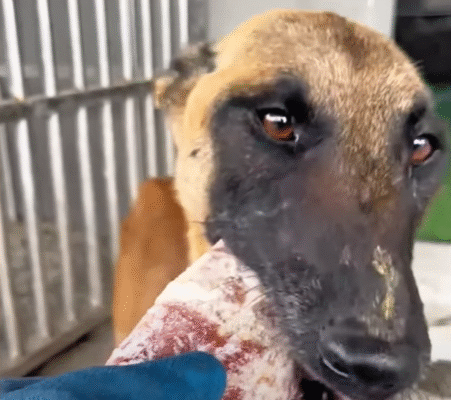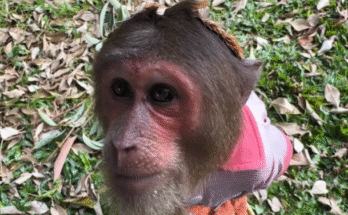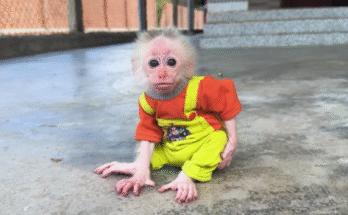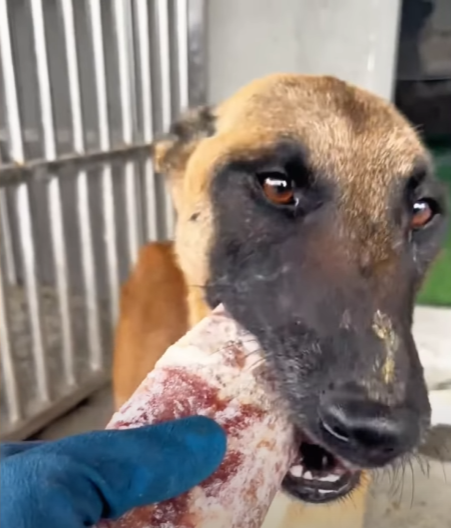
On the outskirts of a bustling city, where people hurried through their days without looking down, a small, fragile dog wandered alone. Her ribs stuck out like fragile branches beneath her torn fur, and her eyes—once bright and full of life—had dimmed into hollow pools of despair. Every step she took was slow and shaky, her paws raw from walking miles on the hot pavement in search of food.
She had no name then. To the world, she was just another stray. But to those who would later meet her, she would become a symbol of resilience and transformation—a miracle in fur.
It was early morning when she was first seen near a marketplace. She limped between the stalls, nose twitching at the scent of grilled meat and bread. Her body trembled with hunger, but every time she tried to approach, people shooed her away. Some threw stones, others yelled, and a few ignored her completely. She had learned to retreat quietly, tail tucked low, her hope fading with each rejection.
She hadn’t eaten properly in days. Trash bins offered only plastic and rotten scraps, and puddles of muddy water were her only drink. Her fur, once a soft golden hue, was now clumped with dirt and fleas. The sharp bones along her spine made her look as though she were carved out of shadow. When she lay down under an old cart that night, the world seemed to forget she existed.
But fate had another plan.
The next morning, a woman named Mia, who volunteered at a local animal rescue group, was driving home from a shelter visit when she spotted movement near the road. At first, she thought it was just another stray scavenging, but something about the frail figure made her stop. The little dog was barely standing—more skeleton than fur, her legs trembling, her face down as she tried to lick a discarded plastic bag for food.
Mia’s heart clenched. “Oh, sweetheart…” she whispered, getting out of the car.
The dog flinched at the sound of footsteps, her instinct telling her to run. But she was too weak to move. She just stood there, eyes wide and fearful, watching as Mia crouched down and gently placed a small piece of cooked chicken on the ground.
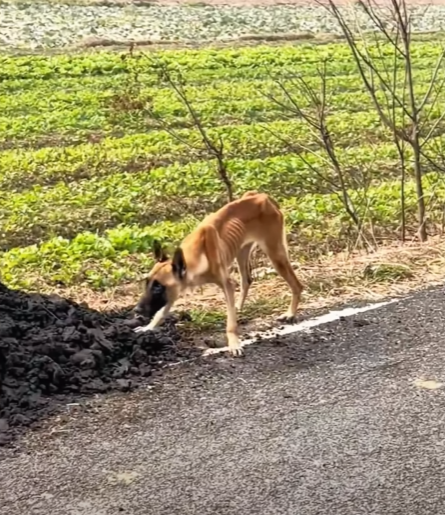
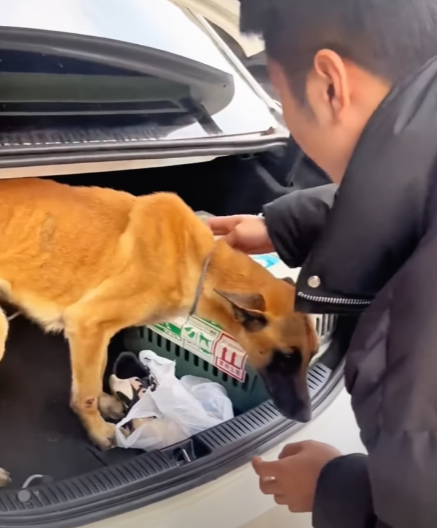
At first, the dog didn’t move. She was cautious—too many humans had hurt her before. But the smell was too much to resist. Inch by inch, she crept forward, trembling, and finally took the food. The way she ate—fast, desperate, afraid it would be taken—brought tears to Mia’s eyes.
“It’s okay,” Mia said softly, holding out another piece. “You’re safe now.”
It took time, patience, and kindness, but eventually the little dog allowed Mia to lift her into the car. She weighed almost nothing—so light that Mia could feel her ribs through the towel she wrapped around her. On the way to the rescue center, the dog rested her head on Mia’s arm, as if realizing for the first time that someone cared.
At the vet clinic, the diagnosis was grim: severe malnutrition, dehydration, anemia, and a body temperature dangerously low. The vet sighed. “She’s been starving for a long time. If she hadn’t been found today, she wouldn’t have survived another two days.”
Mia named her Luna—because, despite her fragile state, her spirit shone like a faint moon in the darkness.
The first few days of recovery were critical. Luna was too weak to stand on her own. The staff fed her small portions every few hours and gave her warm blankets and fluids through an IV. Each time someone approached her, she would tremble, uncertain if she should trust again. But slowly, the gentle hands and soft voices began to melt her fear.
By the end of the first week, Luna began to lift her head when Mia entered the room. Her eyes, still tired, followed her rescuer with cautious curiosity. When Mia spoke, Luna’s tail gave a faint, shy wag—a small but powerful sign that she was beginning to believe in love again.
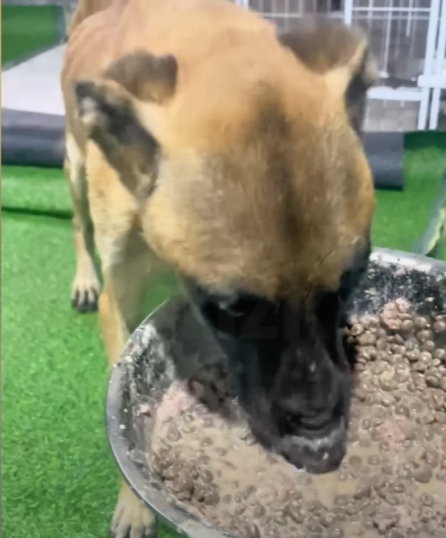
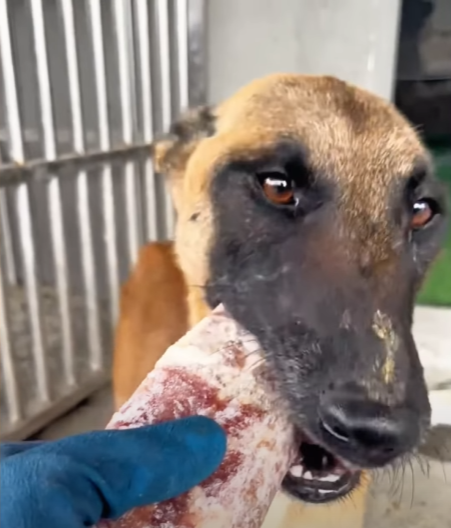
Over the following month, Luna’s transformation was nothing short of miraculous. Her fur started to regrow, soft and golden once more. The wounds on her paws healed, and the dullness in her eyes was replaced with a sparkle of life. Her once-thin frame began to fill out as she gained strength and weight.
But more than her physical healing, it was her spirit that amazed everyone. The dog who once cowered in fear now ran across the rescue yard with joy, chasing butterflies and barking playfully. She had discovered the warmth of human touch and the safety of shelter—a world she never knew existed before.
Mia visited her every day, bringing her treats and sitting quietly beside her kennel. Sometimes Luna would rest her head on Mia’s knee, sighing softly as if saying, “Thank you for not giving up on me.”
By the third month, Luna was unrecognizable. Her coat gleamed in the sunlight, her eyes were full of energy, and she carried herself with a quiet confidence. She loved to run, to play with the other dogs, and to greet the volunteers with happy wags.
Then one day, Mia made a decision. She couldn’t let Luna go.
She had seen many rescues, many transformations—but Luna had left a mark on her heart. “You belong with me,” she whispered one afternoon as Luna curled up beside her. And from that moment, Luna found her forever home.
When Luna first stepped into Mia’s house, she paused at the doorway, unsure. But as soon as she saw the soft bed waiting for her, she walked over, turned twice in a circle, and lay down, sighing deeply. It was as if she finally understood—this time, she was home for good.
Months later, if someone saw Luna running through the park with her tail wagging and her eyes bright, they’d never believe she was once a starving stray, thin as paper, forgotten by the world. She had become strong, radiant, and full of life. People often stopped to pet her, saying, “She’s beautiful. You’re lucky to have her.”
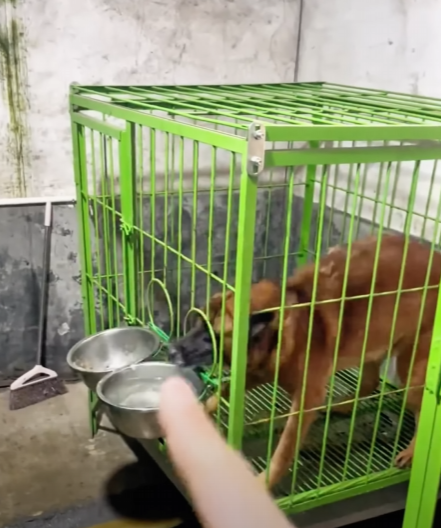
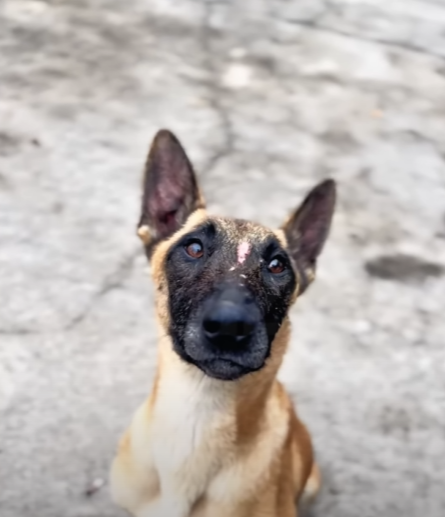
And every time, Mia would smile softly and reply, “No… I’m the lucky one.”
Because Luna wasn’t just a rescue story. She was a reminder that even in the darkest moments, with love, patience, and care, miracles can happen. Her change was so unbelievable that even the vet who once doubted her survival couldn’t hold back tears when he saw her again.
Luna’s journey—from a starving, trembling shadow to a joyful, loving companion—became an inspiration shared by the rescue group. Her before-and-after photos spread online, touching thousands of hearts. People wrote messages saying she gave them hope, reminding them that no life is ever too broken to be healed.
And Luna? She never forgot where she came from. Every time Mia brought her along to the rescue center to visit new strays, Luna would gently nuzzle the frightened dogs, as if to say, “I know how it feels. Don’t be afraid. It gets better.”
The dog who was once thin as paper had not only regained her strength—she had found her purpose.
Luna’s story wasn’t just about survival. It was about love that heals, kindness that saves, and the beauty of second chances. And for Mia, every time she looked into Luna’s eyes, she saw living proof that even when the world turns away, compassion can bring light back to the darkest souls.
